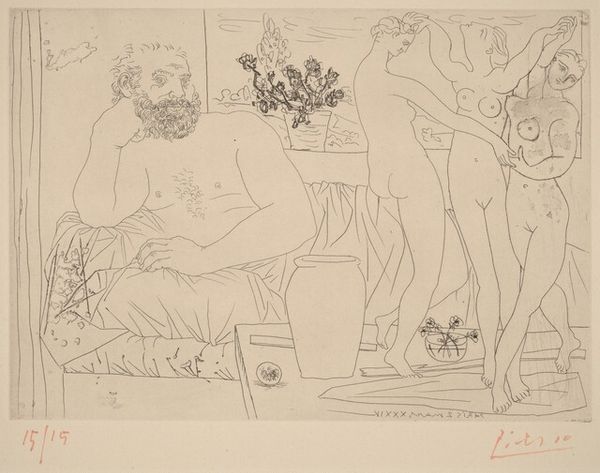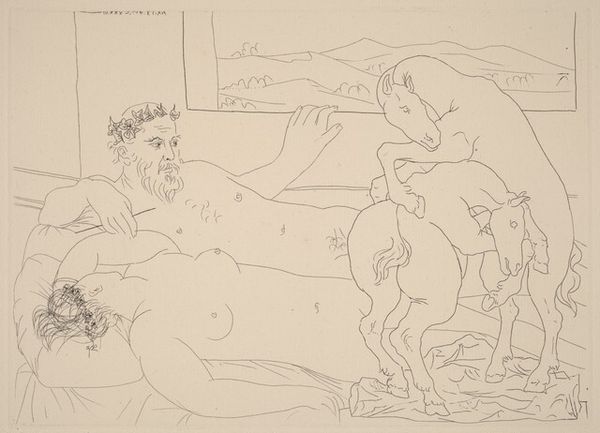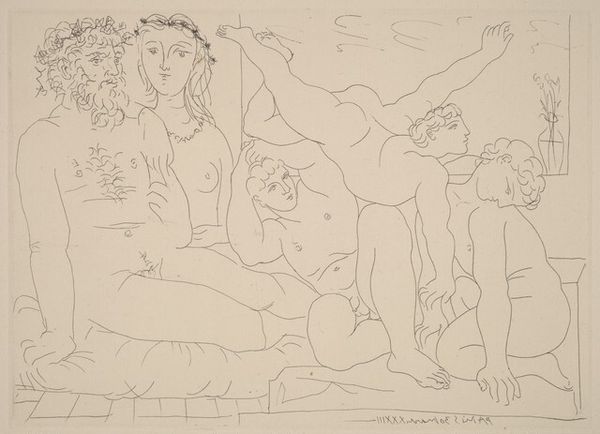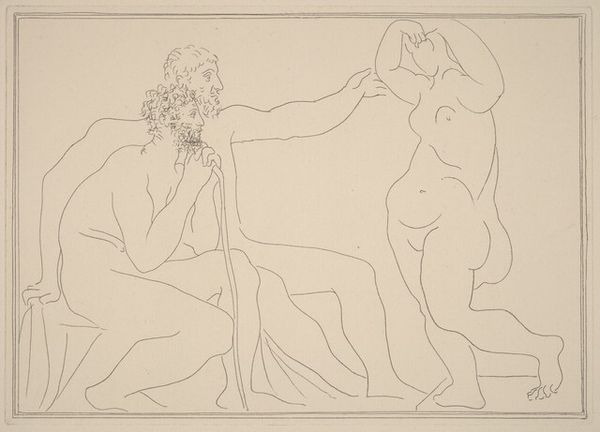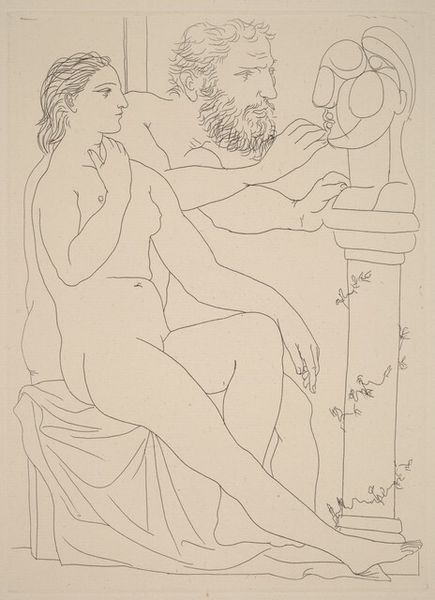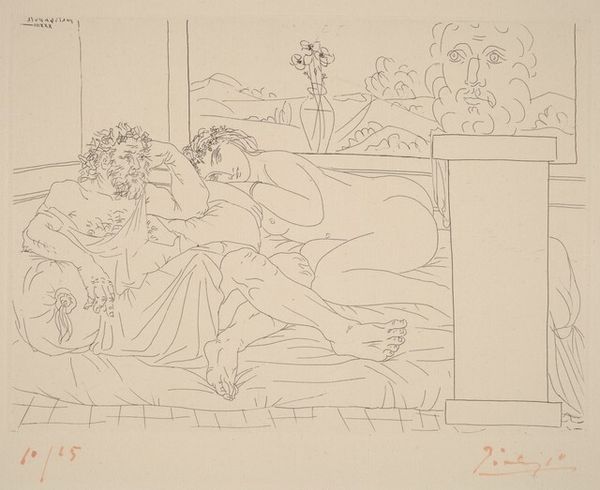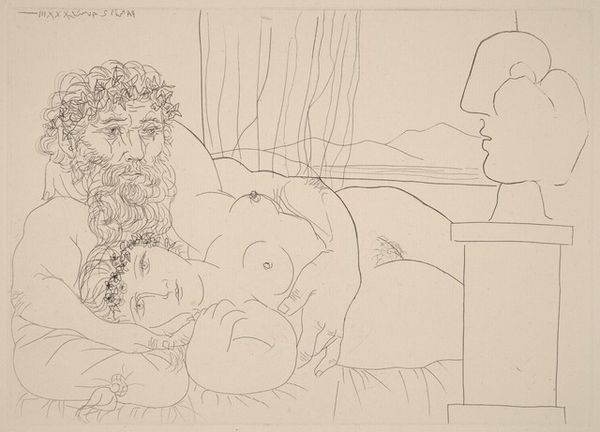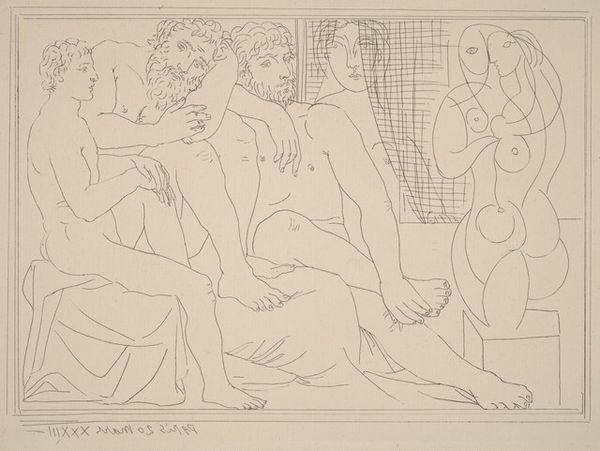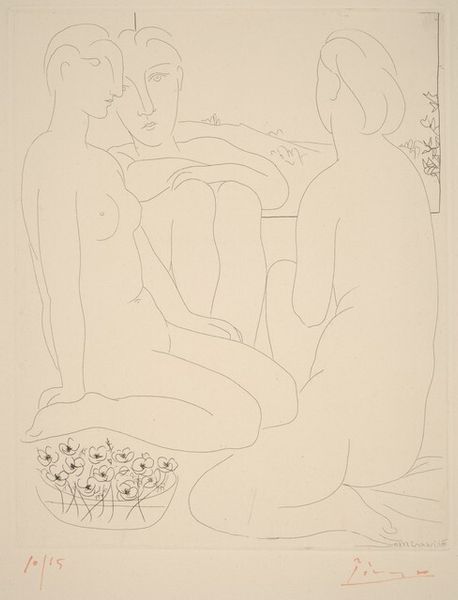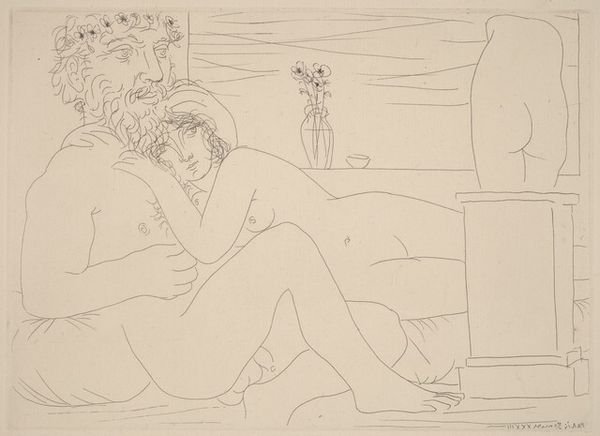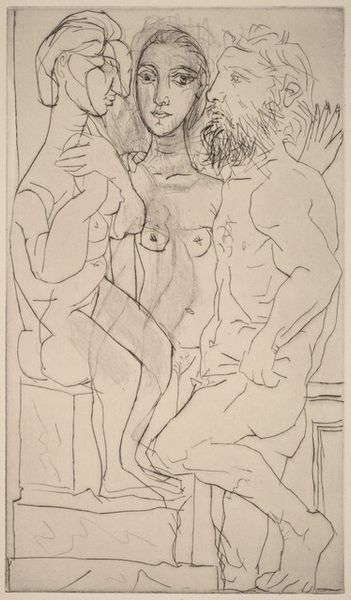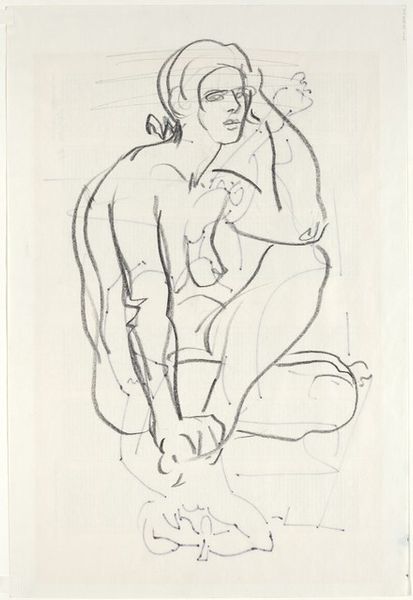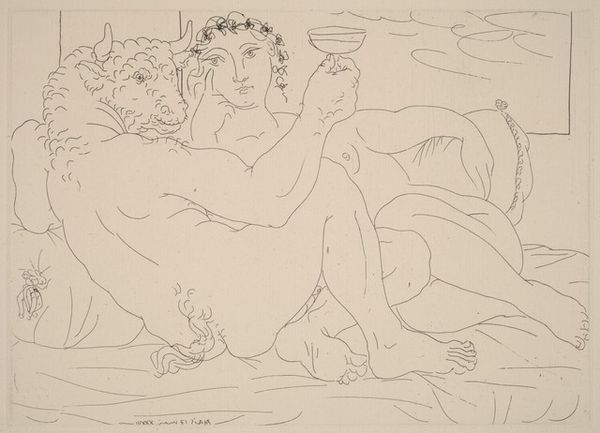
print, etching
#
cubism
# print
#
etching
#
figuration
#
history-painting
#
nude
#
modernism
Dimensions: plate: 19.3 x 26.5 cm (7 5/8 x 10 7/16 in.) sheet: 38.7 x 50.2 cm (15 1/4 x 19 3/4 in.)
Copyright: National Gallery of Art: CC0 1.0
Curator: This etching by Pablo Picasso is titled "Sculptor at Rest II," created in 1933. It presents us with a scene of intimate repose. Editor: It’s striking how much he conveys with so few lines. The delicate nature of the etching enhances the feeling of peaceful contemplation. Curator: Picasso was deeply involved with printmaking during this period, exploring themes around creation and the artist’s relationship with the muse. The classical imagery certainly aligns with those themes. The laurel wreaths, the reclining nude. These were deliberate choices, steeped in art historical traditions. Editor: Absolutely, the classical references are impossible to ignore. But what interests me is how the medium itself, etching, impacts our understanding. Etching, unlike other printing processes, often allowed for very personal mark-making, close to drawing. It provides a crucial material record of how the artist makes a creative choice, which tools were available, what labor the image called for. It allows Picasso to explore a very physical interaction, pushing against notions that he's solely driven by ideas. Curator: I agree. The economy of line definitely points towards a desire to capture the essence of form rather than detailed representation. What do you make of the placement of the sculpted head? It appears almost like a silent observer. Editor: Its rigid lines starkly contrast with the sensuality of the resting figures. I wonder what socio-political moment this domestic and sensual interior evokes when thinking about the print being accessible to a potentially wide range of consumers and collectors. Perhaps its creation signifies the value placed on art during a time when material culture and labor are called into question. Curator: Perhaps, it gives the entire piece a contemplative air. He seems to reflect on the history of his craft while grappling with personal expression. It leaves us to reflect on the timeless conversation between artist and subject. Editor: Exactly. Ultimately, it highlights the conditions for art-making itself.
Comments
No comments
Be the first to comment and join the conversation on the ultimate creative platform.
